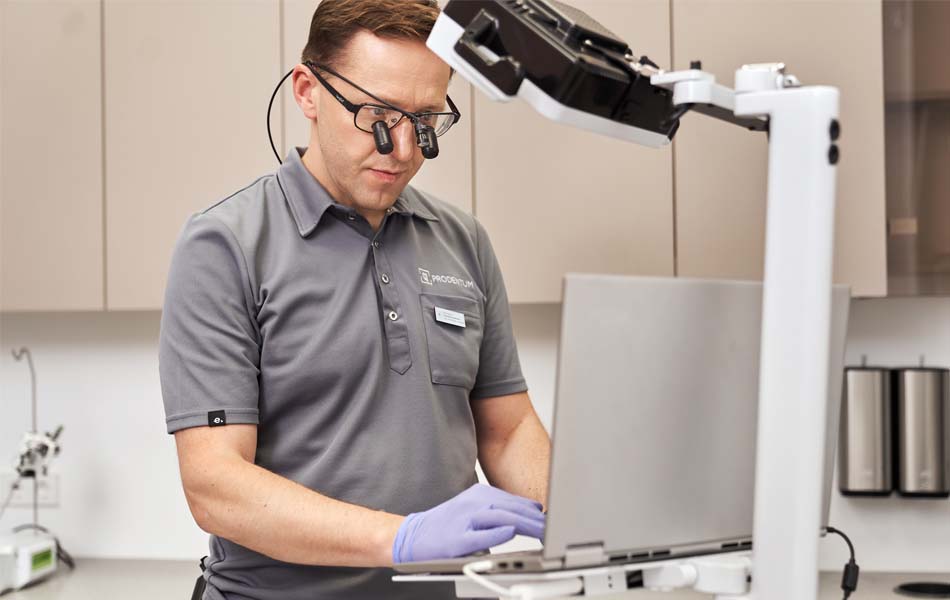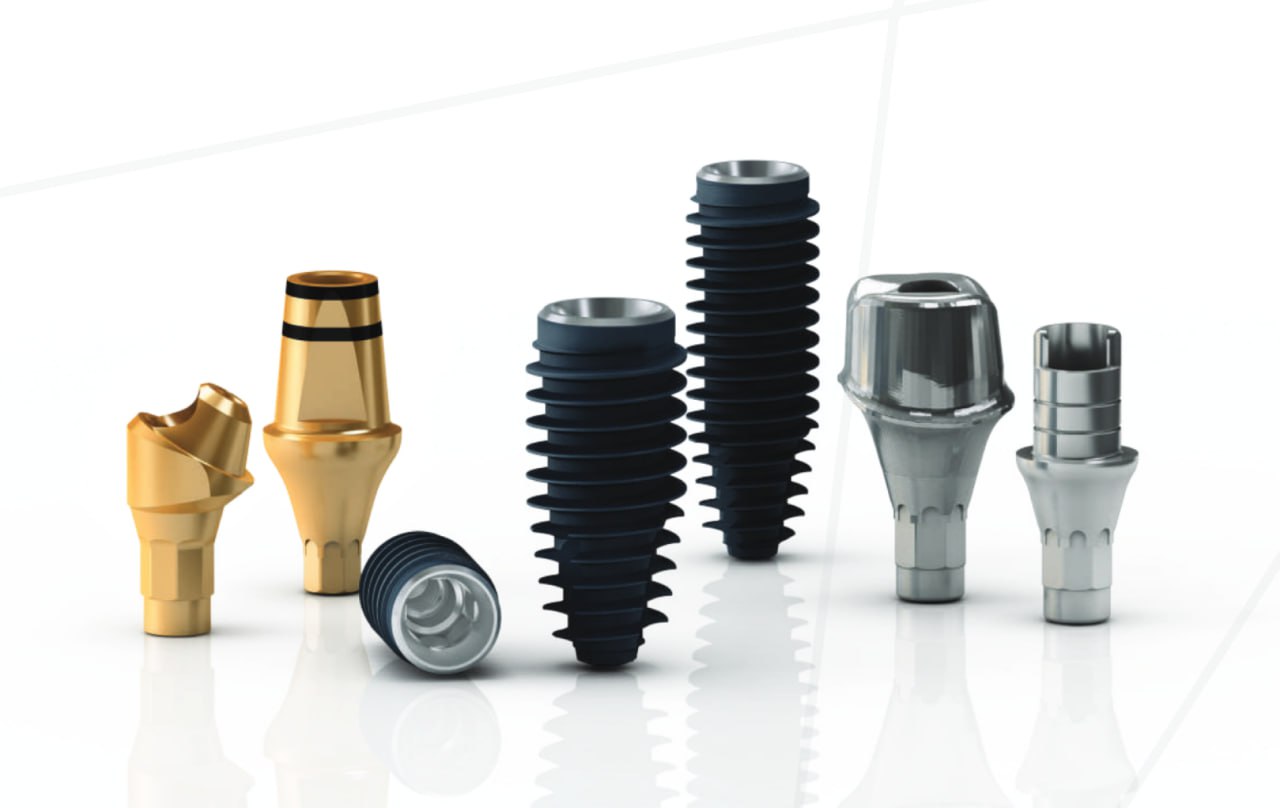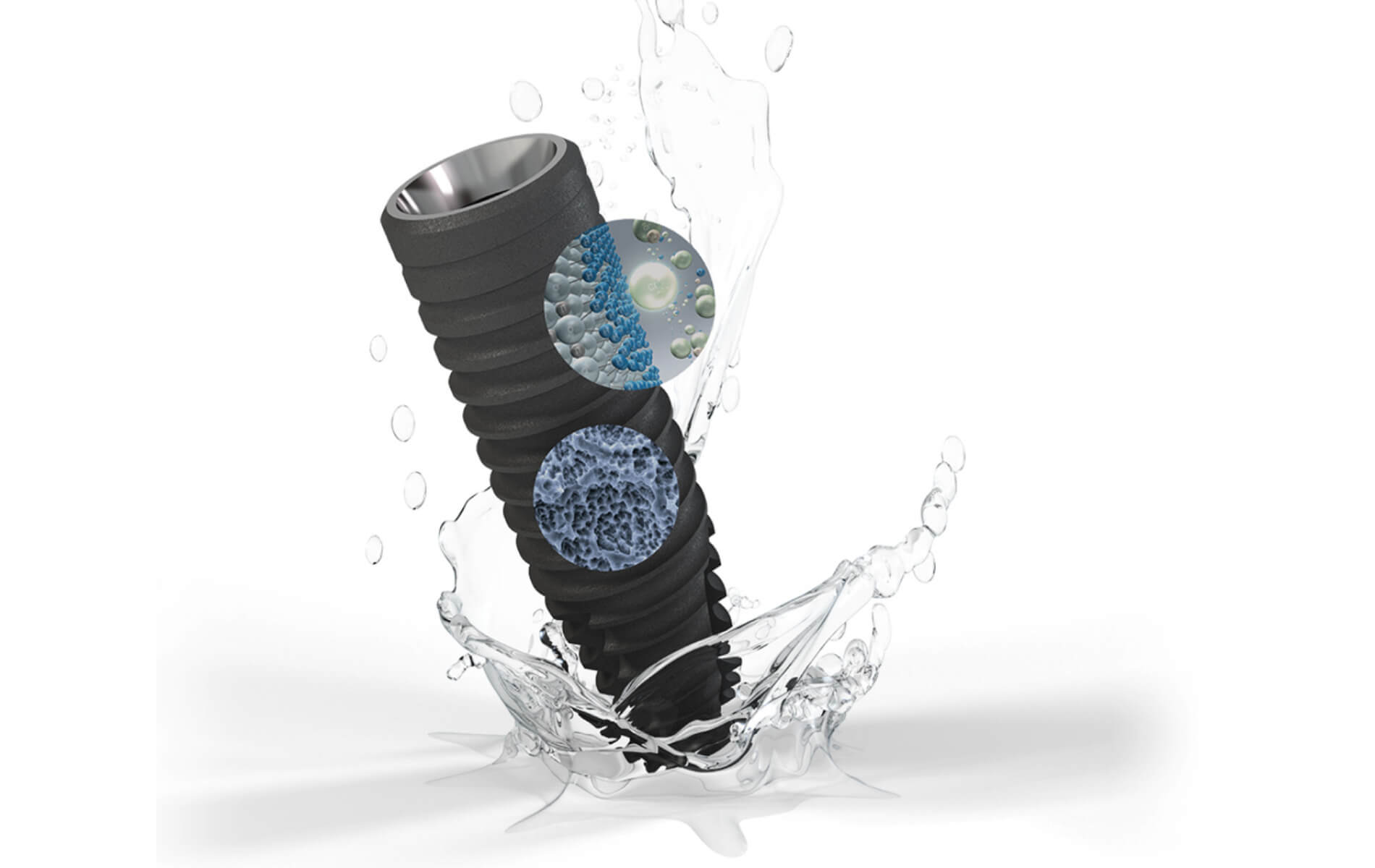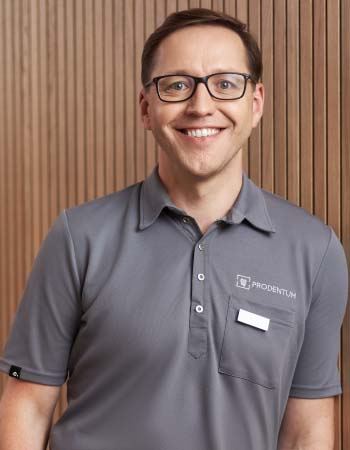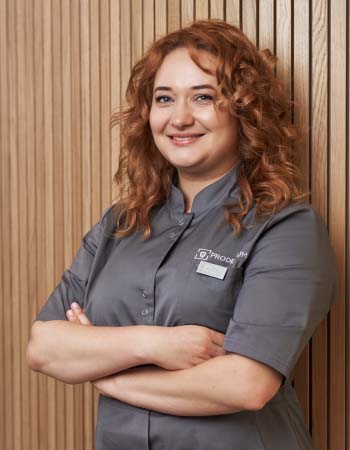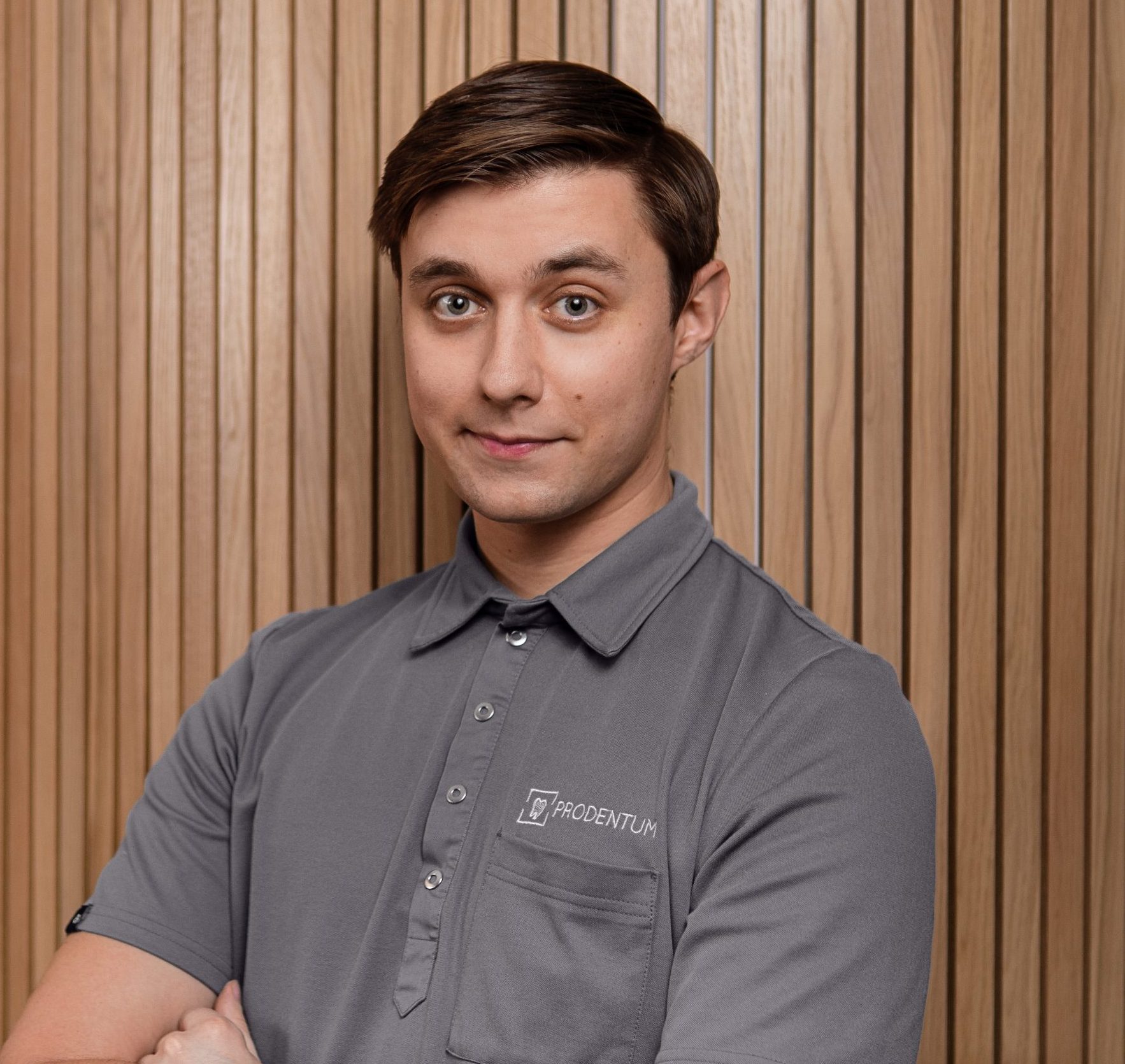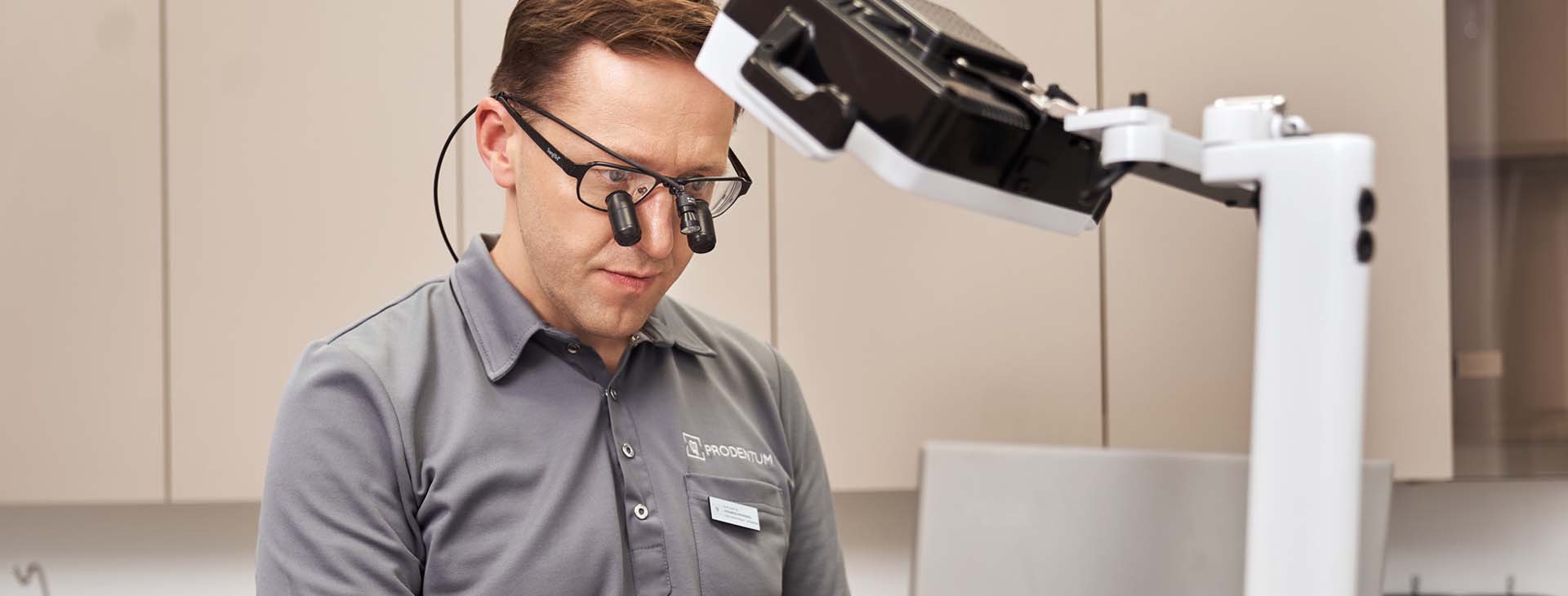
Dental implants
These days treatment using dental implants is safe and effective, and provides the patient means of restoring chewing function and smile with long-lasting results.
These days treatment using dental implants is safe and effective, and provides the patient means of restoring chewing function and smile with long-lasting results. To achieve these goals, thorough patient examination, accurate diagnostic imaging, treatment planning and execution using modern technology is very important. Although a natural tooth is always the preferred option, dental implants are a great solution when the tooth needs to be extracted because of poor prognosis. ProDentum clinic has extensive clinical and scientific experience in dental implants, so we are able to offer high quality results based on the latest scientific and real-world knowledge. We are one of the leading digital implant placement and prosthodontics clinics in Europe, we perform international scientific studies together with research and development centers in Switzerland, Sweden, Italy, Belgium, Austria, and also take part in professional education in Lithuania and internationally.
It is important to remember that compared to natural tooth, implant’s defenses against inflammation are inferior – even a small amount of plaque may cause significant inflammation of gums and tissues surrounding the implant. Therefore, both careful work of the clinical and proper home care of the implant is important.
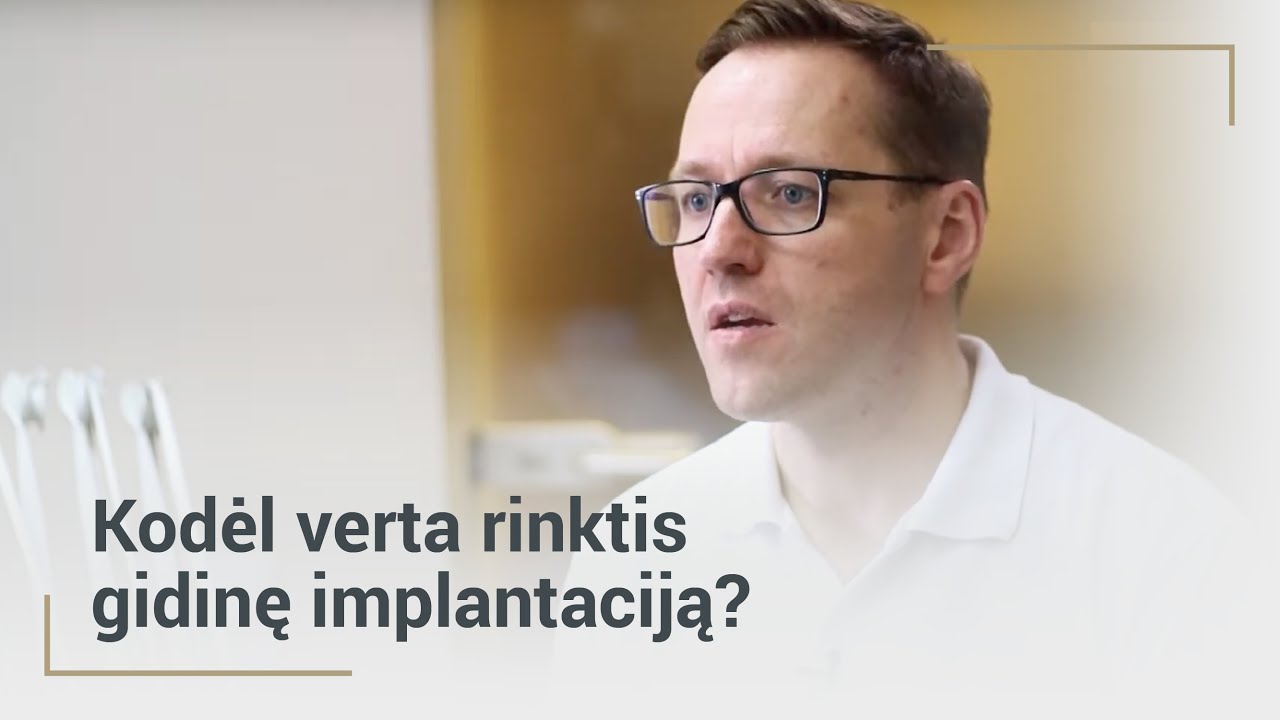

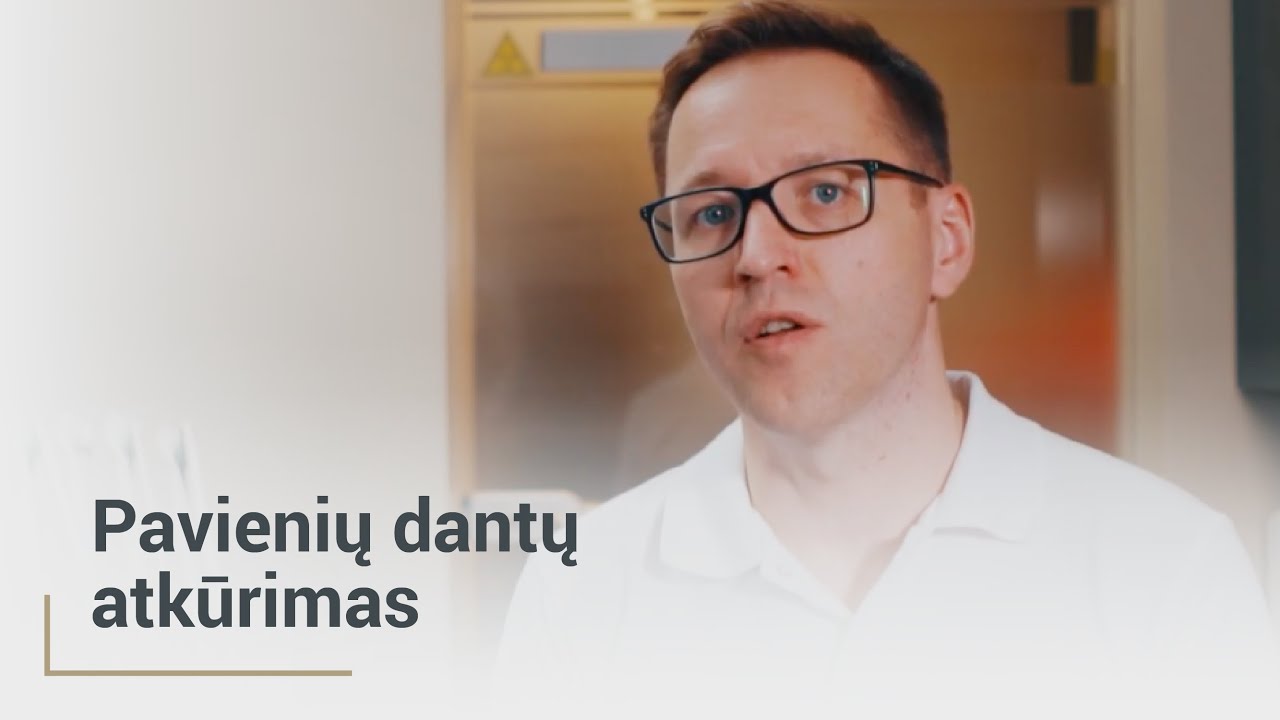

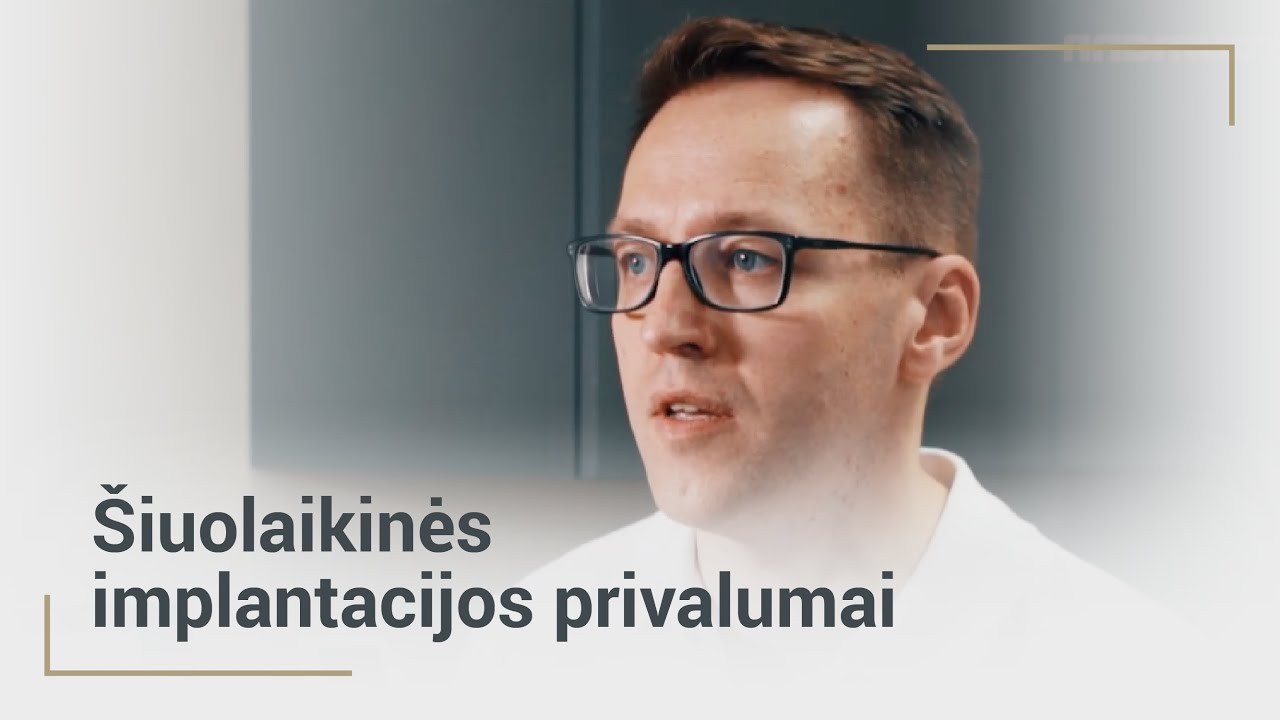

Disadvantages of conventional restorations
In the past, teeth that were significantly damaged by decay or teeth with a bad root canal or periodontal prognosis would be treated using multiple-stage complex treatments, which were rarely predictable. In case a tooth was lost, fixed partial dentures (FDPs or bridges) would be made. This involved grinding adjacent teeth, and these restorations were difficult to clean and maintain. In turn, this increased the risk of decay or periodontal disease of supporting teeth. When these issues worsened, the supporting teeth and the bridges were lost. Furthermore, the appearance of conventional tooth prostheses usually was disappointing, and due to difficult cleaning they were rarely hygienic.
Conventional bridge-type restorations are difficult to maintain and they worsen the longevity of supporting teeth.
If more teeth were lost, treatment using fixed restorations was impossible, and removable dentures were the only treatment option. Removable dentures were usually used to restore large defects, such as loss of posterior teeth or all teeth (edentulous jaw). These prostheses only partially restore the chewing function, they are unstable and uncomfortable, as the prosthesis rests on patient’s oral mucosa. Their appearance is unappealing, they trap food debris underneath, patients had a difficult time speaking with them. Sometimes patients could not get used to them and wear them, or would constantly feel irritation or nausea.
Old-generation tooth prostheses, which do not ensure chewing function and aesthetics
Long-term use of these dentures caused resorption of edentulous bone (loss of bone), their fit worsened (even if new ones were made!), and patient satisfaction decreased dramatically. Bone loss caused loss of lip support, facial wrinkles were more evident and caused an aged appearance.

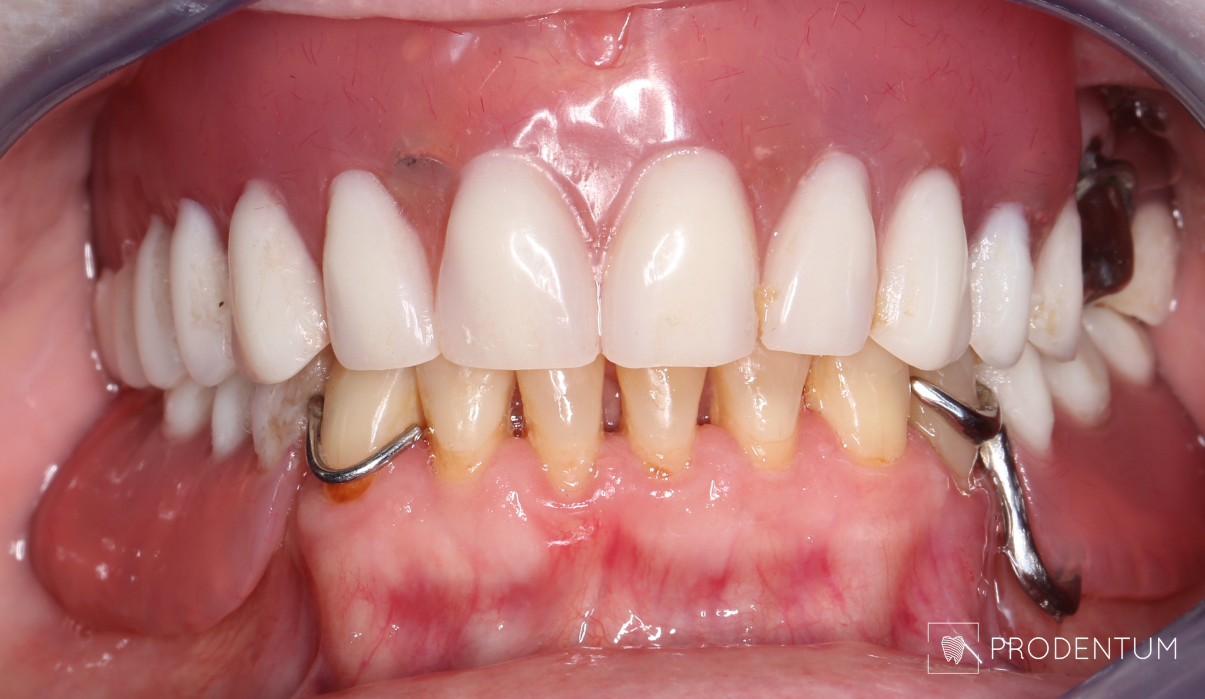

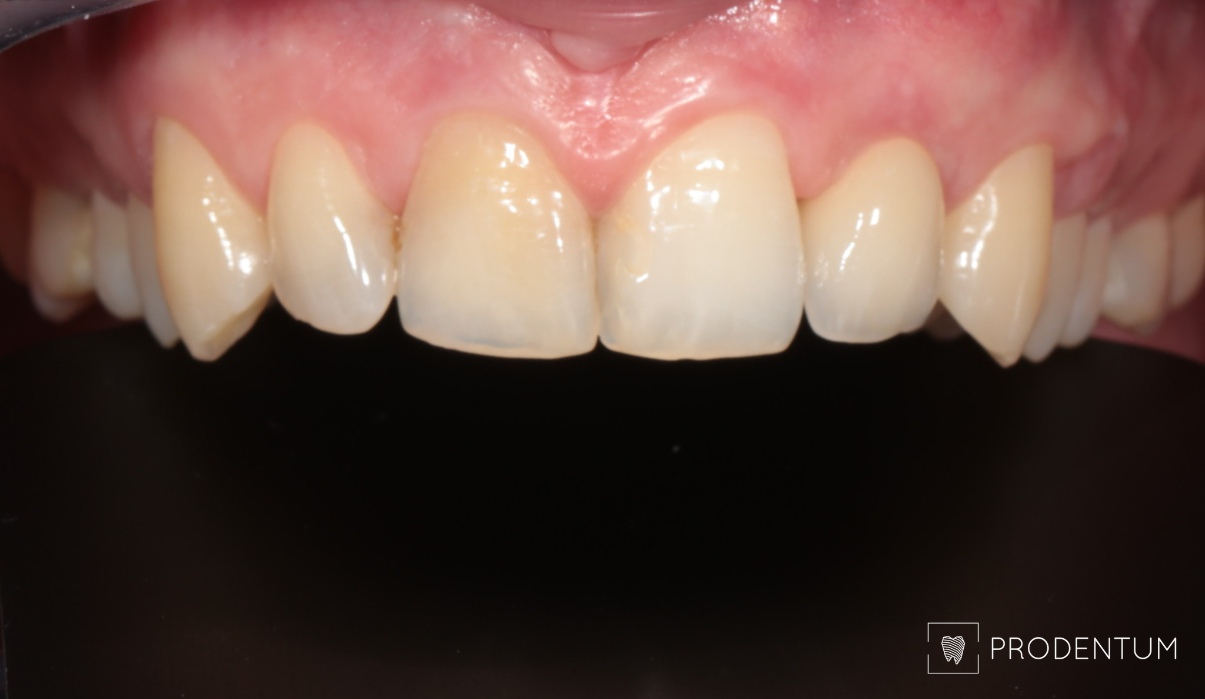
Lost tooth replaced with an implant to avoid grinding adjacent teeth. A durable and attractive treatment result
If the physician deems it possible, it’s preferred to place the implant right after removing the tooth, and an intermediate prosthetic component is placed on the implant. This way the adjacent tissues are less disturbed, and their form and aesthetics are maintained. No additional interventions are necessary, which increases patient comfort. ProDentum clinic specialized in application of digital technology, where the implant position is accurately planned before removing the tooth, and a 3D-printed surgical implant placement guide and temporary restorations are manufactured before the procedure. In rare cases, right after implant placement a permanent restoration is placed! When a case is planned comprehensively, patient feels less discomfort, and treatment results are greatly improved.
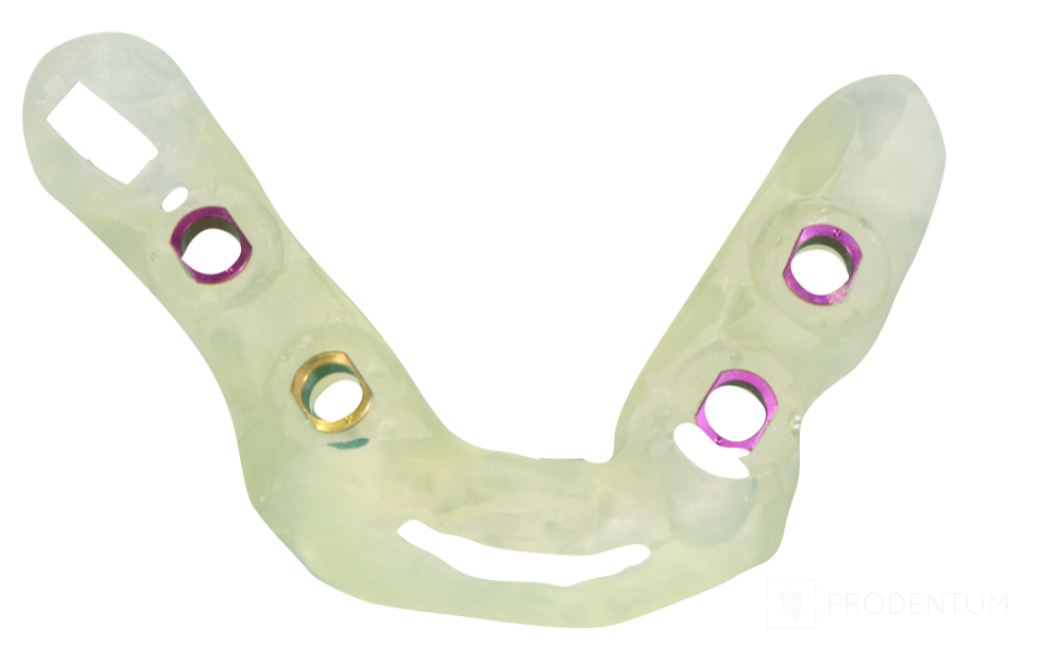

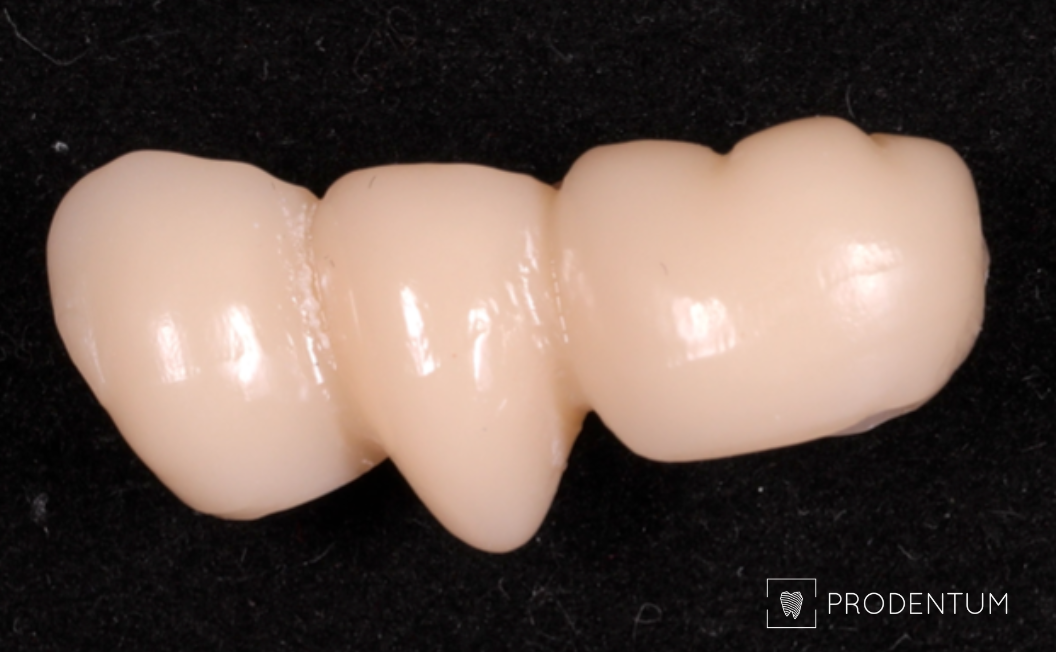
Implant placement guide and prosthetic components manufactured before placing implants.
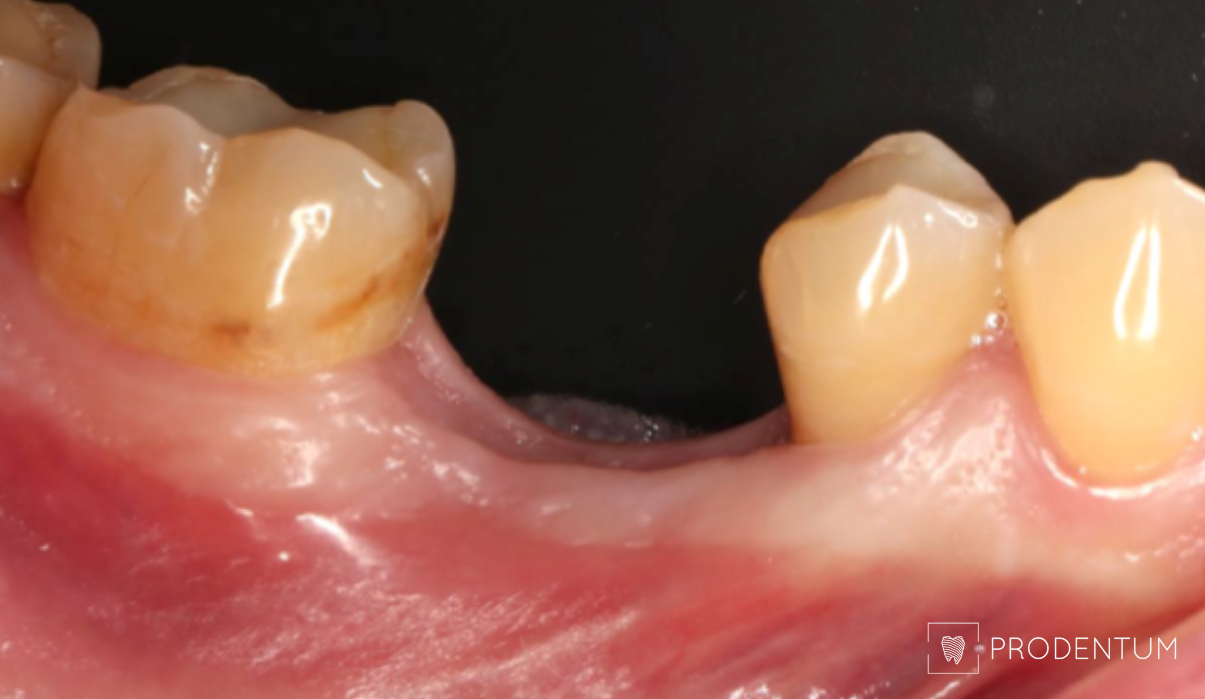

Early implant placement and restoration minimized patient discomfort and provides a great treatment result.
The goal is always to plan and execute a treatment which results in fixed (non-removable) tooth- and/or implant-supported restorations, as this solution the most closely resembles the natural dentition. However, if tooth defects are larger and they cannot be restored using fixed implant-supported restorations due to various reasons (medical, technical, financial, etc.), using a reduced number of implants to improve the retention of removable dentures is possible to increase denture stability and patient comfort.
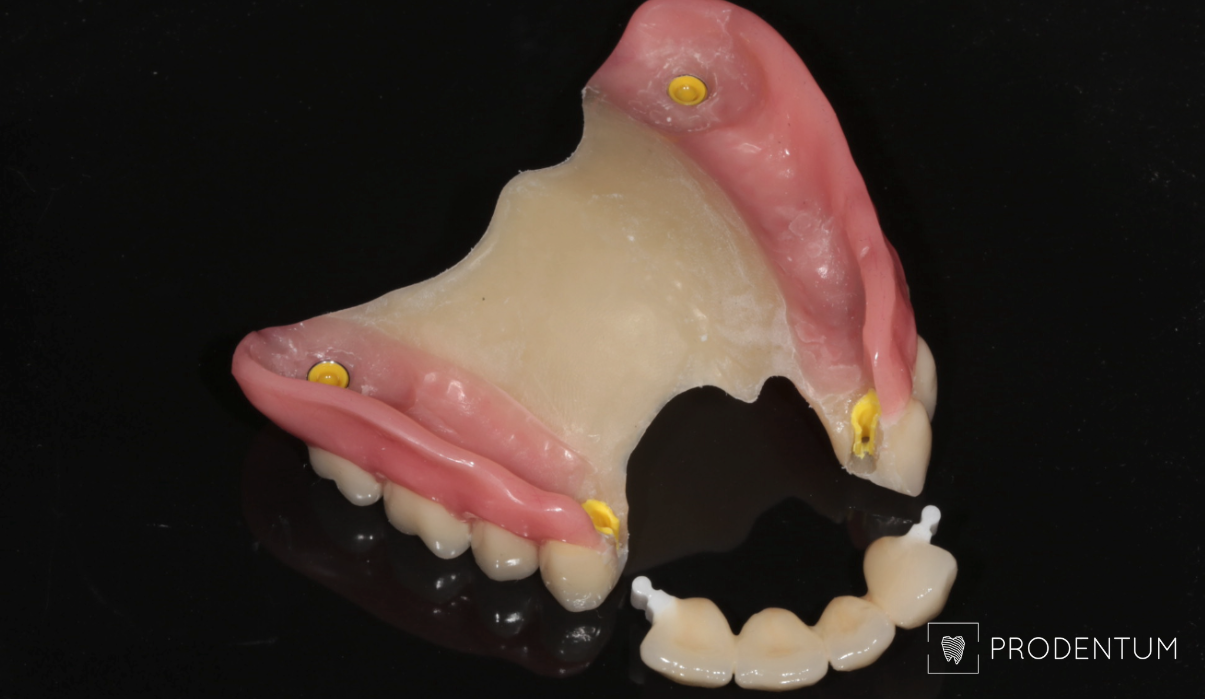
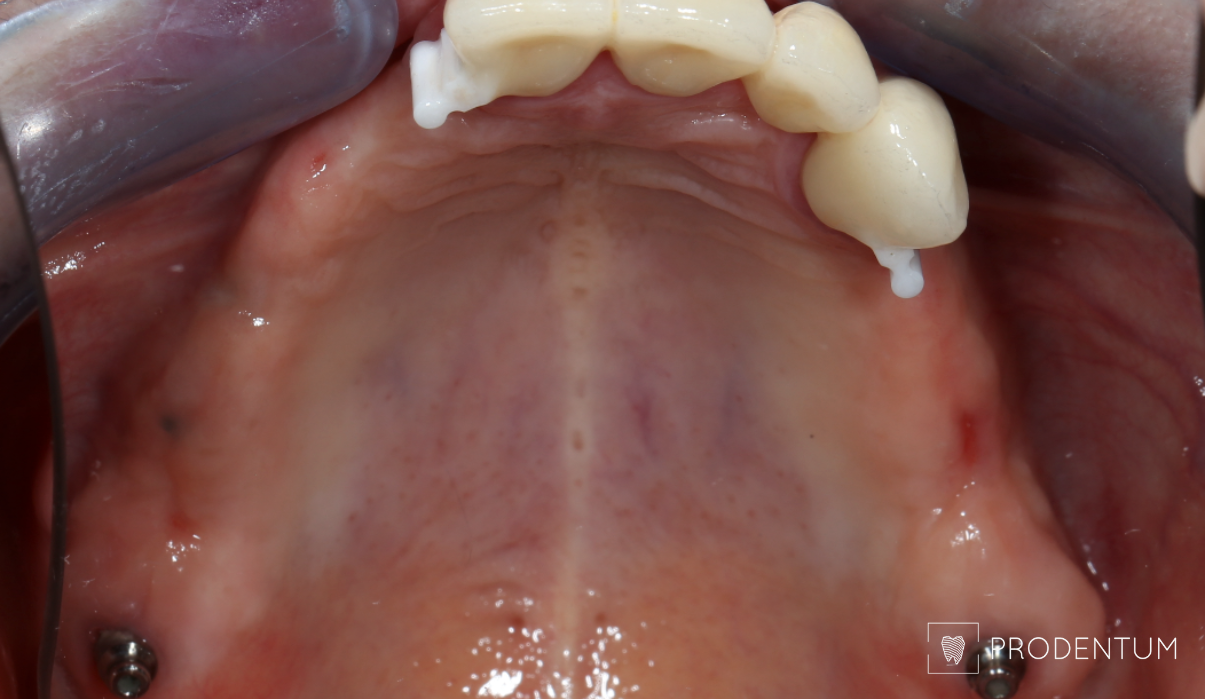
Two implants used to increase removable denture stability and patient comfort
Bone and soft tissue augmentation procedures
In the area of the jaw where teeth were removed or simply have not formed there may be a marked decrease of bone quality, bone tissue, worse soft tissue condition or other defects of the edentulous area. This necessitates additional procedures to improve bone tissue quality, increase its volume and optimize soft tissue condition. During these procedure, various techniques may be used together with autogenous (your own) bone or allogeneic (derived from humans), xenogeneic (derived from animals) or synthetic bone substitutes.
In order to avoid these defects, implant placement immediately after tooth removal should be considered (immediate implant placement), and if it is not possible, implant should be placed no later than after 6 months, meanwhile avoiding denture pressure on the area. If immediate implant placement is not possible, after tooth extraction, bone substitutes, membranes and other materials promoting healing may be placed into the wound to facilitate healing and reduce bone loss.
Tooth loss may result in vertical and horizontal defects of alveolar bone. The goal of implant planning is to find a suitable position in remaining bone, and if it is not possible, to find a prosthetically suitable implant position where the least amount of bone augmentation is necessary.
Some of the most common procedures in implant treatment is guided tissue regeneration (GTR) and sinus floor lift procedures. These procedures are often performed together with implant placement. If defects are larger in scope, first bone augmentation is performed, and implants are placed after healing is complete.
GTR (guided tissue regeneration) method is usually used when patient’s jaw is too narrow, and one side of the placed implant is not covered by bone (in this case, bone substitute is added to the side of the implant). The bone substitute is covered by a membrane to maintain the volume created using the bone substitute.
Sinus lift method is used to increase the amount of bone vertically in the posterior region of the upper jaw. Due to bone loss and low sinus floor, the amount of bone is ofter insufficient to place an implant of required length. During the procedure, the sinus floor is lifter, and the gap is filled with bone substitute and an implant is placed. The scope of the procedure depends on the shortage of bone: if approx., if there is approx 3 mm of bone lacking, a minimally invasive closed sinus lift surgery may be performed. If a larger area of the sinus floor needs to be lifted, a more invasive open sinus lift is necessary.
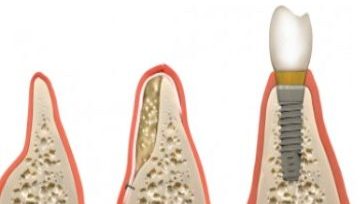
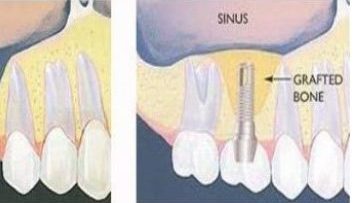
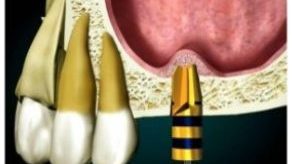
Other bone augmentation techniques may be used, such as bone blocks, alveolar splitting, etc. On the other hand, if gum tissue insufficiency is diagnosed, various gum thickening, attached gingiva augmentation, vestibular deepening, papilla regeneration and other procedures.
In order to plan the implant position and the need for bone and soft tissue augmentation precisely, at the ProDentum clinic we use advanced technology: intraoral scanning, 3D computed tomography, facial scanning, CAD/CAM and 3D printing. They are used to create a digital model of the patient, where treatment is simulated to determine the safest, most predictable strategy that ensures the best treatment results.
Implant treatment process
Implant placement is a surgical procedure, therefore before it, a thorough patient examination is necessary. Absolute implant contraindications are very rare. A general medical examination, bite examination and condition of adjacent teeth is performed, additionally, bone quality and quantity is determined during X-ray examination, and implant placement and restoration is simulated in specialized software. According to the results of the examination, the clinician determines the number of implants needed, their dimensions and position.
Implant placement is usually performed under local anesthesia. It is very important that the implant is placed exactly in the planned position, so during the procedure special custom surgical guides are used. Usually dental implant surgery is well-tolerated and does not inconvenience patients (usually painkillers are no longer necessary the day after surgery). In some cases patients will be prescribed antibiotics.
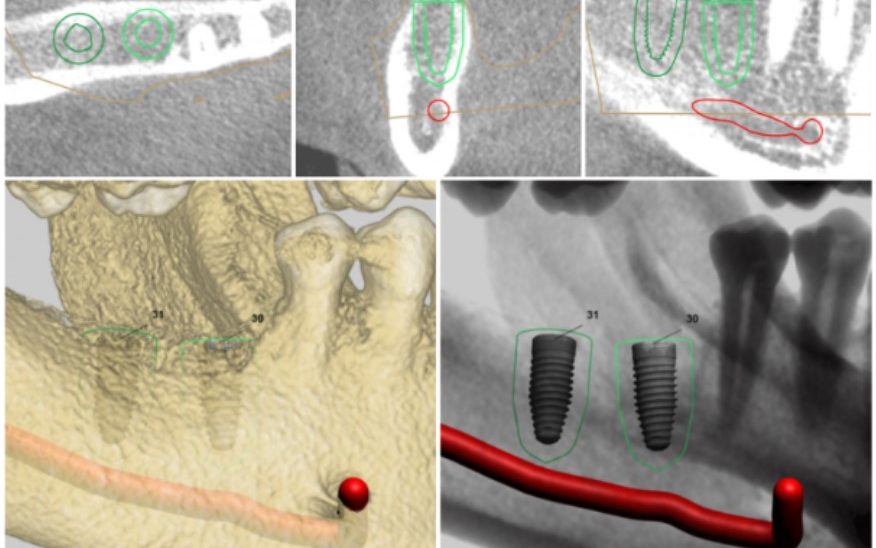

Depending on the surrounding tissue quality, patient’s bite and implant’s primary stability, different restoration protocols may be used, which affect the time when the final prosthesis is placed: immediate (up to 1 week), early (up to 2 months) and delayed (more than 2 months). Modern technology is used during the procedures so that the implant position planning and manufacturing of prosthetic components (both temporary and definitive) is exceptionally precise. Therefore immediately after implant placement temporary or definitive prosthesis can be placed to provide aesthetics and function. In a favorable case, a patient may leave the dental office with an implant and a final restoration in the same day!
Cost of dental implants
The cost is determined during consultation and may be adjusted during treatment.
Dental implants
Name
of service
Price
Price
Prof. med.dr. V. Rutkūnas
Implant placement (Premium+ category) Straumann SLActive, Nobel Biocare Active
820,00€
€
Implant placement (Premium category) Straumann SLA, Camlog, Nobel Biocare Replace, CC Parallel
740,00€
€
Implant placement (Standard category) Medentika, Megagen, Neodent
640,00€
€
Healing abutment
90,00€
€
Dynamic navigation plan
150,00€
€
Small bone augmentation
150,00€
€
Medium bone augmentation
240,00€
€
Extensive bone augmentation
350,00€
€
Augmentation using autogenous bone block
1200,00€
€
Augmentation using a custom-made bone block (not including cost of materials)
1400,00€
€
Soft tissue augmentation
260,00€
€
Closed sinus lift
340,00€
€
Open sinus lift
1100,00€
€
Mini-implant, provisional implant
540,00€
€
Additional bone material
249,00€
€
Prosthodontist Prof. Dr. V. Rutkūnas price list
Name
of service
Price
Price
Prof. med.dr. V. Rutkūnas
Milled PMMA provisional crown
160,00€
€
Tooth restoration using glass fiber/titanium post
185,00€
€
Full-ceramic (zirconia or glass-ceramic) crown
795,00€
€
Full-ceramic layered crown
930,00€
€
Veneer, layered glass-ceramic
1047,00€
€
Veneer (feldspathic porcelain)
1175,00€
€
Porcelain-fused-to-metal crown
925,00€
€
Metal alloy restoration (excl. cost of precious metal)
795,00€
€
Implant-supported full-ceramic (zirconia or glass-ceramic) crown
990,00€
€
Implant-supported full-ceramic layered crown
1116,00€
€
Custom zirconia/titanium abutment
425,00€
€
TFW protocol for fixed partial denture
397,00€
€
Fixed acrylic prosthesis with metal framework (4 implants)
5290,00€
€
Porcelain-fused-to-milled-metal fixed prosthesis (4 implants)
7150,00€
€
Zirconia fixed prosthesis (4 implants)
7800,00€
€
Zirconia TFW prosthesis (4 implants)
8460,00€
€
Fixed zirconia prosthesis with milled metal framework (4 implants)
9130,00€
€
Glass-ceramic crown in full-arch prosthesis
135,00€
€
Each additional implant prosthetics
1180,00€
€
Partial removable prosthesis
660,00€
€
Full removable prosthesis
930,00€
€
Partial removable denture (no attachments)
1780,00€
€
Implant-supported overdenture (no attachments)
1320,00€
€
Cast-frame implant-supported overdenture (no attachments)
2250,00€
€
Other recommended treatments
The ProDentum clinic has a wide range of services and provides patients with the highest level of professionalism.


